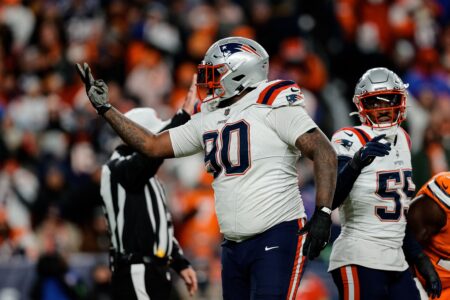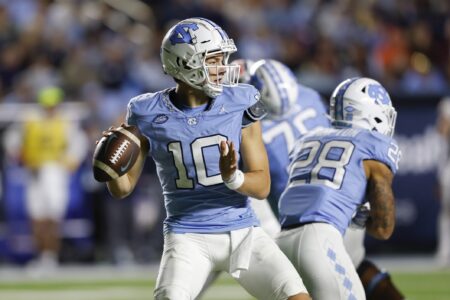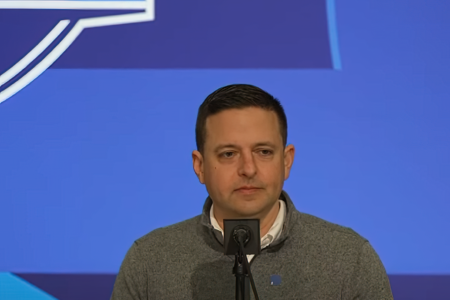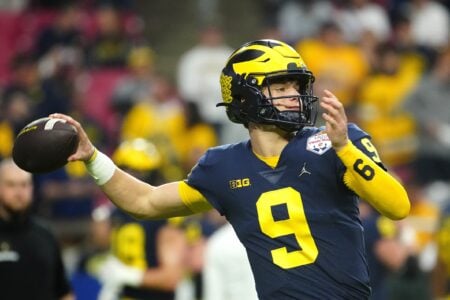aluminum seats
Pro Bowl Player
- Joined
- Dec 18, 2006
- Messages
- 10,423
- Reaction score
- 11,301
Registered Members experience this forum ad and noise-free.
CLICK HERE to Register for a free account and login for a smoother ad-free experience. It's easy, and only takes a few moments.I fail to see how 2 low percentage plays are better than 2 high ones, especially if you're trying to come back from 14 down.
This is a huge and important point. The psychological pull to "still be in it" is so strong it can be hard to accept that it's not always rational.
- Is the probability of converting a 2nd 2-point attempt the same as the first? Maybe you've already shown your best deceptive formation, etc.
- Is the overtime probability really 50-50? If you're storming back from a huge deficit, couldn't that mean that you have established an advantage over your opponent -- perhaps your hurry-up has worn out their defense, or they've lost key players to injury, etc.
- In the regular season, what is the value of a tie? In some cases a tie can secure you a playoff spot, making OT somewhat more desirable.
I think the math is skewed on this issue because teams only go for 2 when going for 1 doesn't get them anywhere. If more teams went for 2 all the time, no matter what the situation, then the probability of success, IMO, would go down. Then it would not look like such a hot option.

This is a huge and important point. The psychological pull to "still be in it" is so strong it can be hard to accept that it's not always rational. But...
And lots more. E.g....
- Is the probability of converting a 2nd 2-point attempt the same as the first? Maybe you've already shown your best deceptive formation, etc.
- Is the overtime probability really 50-50? If you're storming back from a huge deficit, couldn't that mean that you have established an advantage over your opponent -- perhaps your hurry-up has worn out their defense, or they've lost key players to injury, etc.
- In the regular season, what is the value of a tie? In some cases a tie can secure you a playoff spot, making OT somewhat more desirable.
Ive never seen NFL HCs do that.
If the Pats were down by 14, Brady would try to drive for the TD/6 and BB would kick the PAT/1. Going for 2 doesn't change the fact that you still need another TD/6. This type of thinking would play right into the teams hands like the Patriots who emphasize excelling in redzone defense where there less room to operate for the offense.
Think of how a HC would get roasted for missing the 2 point conversion TWICE and losing the game where kicking the PATs would have at least tied.
Here's the key: The kicking scenario is NOT just 2 high percentage plays. It's 2 high percentage plays times the odds of winning in overtime.
If you convert the low percentage plays it's over, you've won.
EDIT: or to put it another way, you're not "trying to come back from 14 down." The comeback itself has no value, the goal is to win the game.
Then like I said before, coaches should just go for 2 on every attempt.
I understand the idea, I just don't see how failing to score the 2 pointer and being down 8 instead of only 7 allows you to "optimize" what you do after the 2nd TD.
It forces you to need to score a touchdown AND a 2 point attempt, which means that as soon as you miss the first attempt your chances of tying/winning go down dramatically.
Who cares if you get roasted? The object is to win, not to prevent talk radio from having a big day. Most head coaches play scared when the game is on the line and they are in the spotlight. That's the point of the analysis: to show that there is a better way. I'm not sure I buy the GB case, as he's getting a little fancy to show more than a nominal difference, but the KC case is pretty strong - at least as a base case. As you say, if you are playing a strong red zone/goal line defense, your decision could change dramatically.
One thing that Brian Burke used to do before getting bought-out by ESPN is calculate break-even probabilities for certain situations. This is done by back-calculating the probability of success for the 2-pt conversion, holding all other variables constant (in this case, e.g., overtime win probability, XP success probability) to figure out what probability of success you would need on your 2pt conversion to break even. If you feel your probability better than that, you go for it. If not, you don't. This is probably a much more useful tool for a coach than simply calculating expected win probability for a decision. I'd think Ernie Adams would be all over this..
You're confusing posts that are talking about 15 point deficits for ones that are discussing 14 point deficits. Both QM and Fencer's comments (the ones you quoted) are referring to 15 point deficits and that it is more useful to know after the first TD whether the 2pt attempt will fail.
I'm not sure that follows. Early in the game, exact point differentials aren't terribly meaningful because there's vast uncertainty about the scoring to come. The logical strategy in that situation is simply to maximize the expected value of each play -- e.g. kicking a field goal on 4th & goal at the 20-yard line, even if you're down by 7. Late in the game the scenarios narrow and the point differential becomes more germane.
Going for two isn't as easy as it used to be, so it's wrong to do it in the down 14 situation.
I certainly trust your analysis and I admittedly did have some difficulty picking up analytical methods in grad school, but I just still have a hard time getting past what seems like common sense to me.
If I'm coaching a team down 14 points, I'm trying to score a TD and XP every time. Perhaps that is ultimately wrong.
Then like I said before, coaches should just go for 2 on every attempt.
I certainly trust your analysis and I admittedly did have some difficulty picking up analytical methods in grad school, but I just still have a hard time getting past what seems like common sense to me.
If I'm coaching a team down 14 points, I'm trying to score a TD and XP every time. Perhaps that is ultimately wrong.













